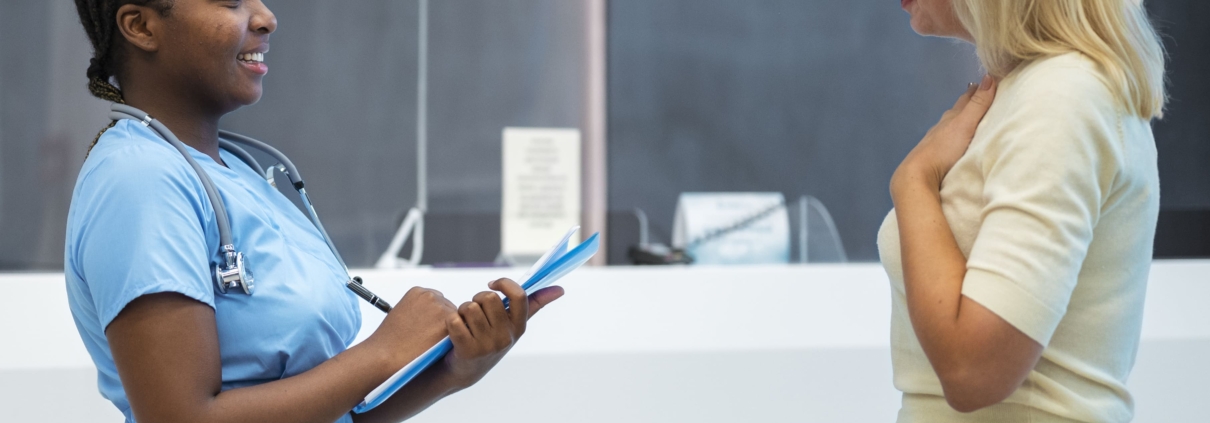How To Talk To Your Doctor About Uterine Fibroids
Uterine fibroids are common, but the way they affect women can differ greatly. Talking to your doctor about fibroids and knowing what to ask, helps you find out what treatments are available in South Africa. You can also make better decisions.
Here, the team at Minima Radiology, a leading interventional radiology practice specialising in non-surgical fibroid treatments, answers some of the most important questions to ask your gynaecologist or radiologist.
Talking to Your Doctor About Fibroids–Q&A with Minima Radiology South Africa
Question 1: What symptoms should prompt me to talk to my doctor about fibroids?
Fibroids can cause a range of symptoms, some subtle, others disruptive. You should speak to your doctor if you experience:
- Heavy or prolonged menstrual bleeding
- Pelvic pain or pressure
- A bloated or “full” feeling in your lower abdomen
- Frequent urination or difficulty emptying your bladder
- Pain during sex
- Difficulty falling pregnant or staying pregnant
Keeping a brief log of your symptoms, when they occur and how they affect your daily life, can help your doctor better understand what’s happening.
Question 2: What are my treatment options, and should I ask about non-surgical solutions?
Yes. Fibroid treatment should be personalised, meaning you deserve to know all your options outside of surgery.
At Minima Radiology, one of the most effective non-surgical options is Uterine Fibroid Embolisation (UFE).
UFE works by blocking the blood supply to fibroids, causing them to shrink naturally over time. It is performed by an interventional radiologist, not a surgeon, using a tiny catheter and imaging guidance.
In most cases, patients go home the same day or after a single night in hospital, and recovery is much quicker than surgery.
Questions to ask your gynae about fibroids:
- “Am I a good candidate for UFE?”
- “How does UFE compare to myomectomy or hysterectomy for my case?”
- “Will my medical aid cover UFE?” (Most South African schemes do.)
Question 3: How do I know if I’m a good candidate for UFE?
Most women with symptomatic fibroids are suitable candidates, but your doctor will assess:
- The size, number, and location of your fibroids
- Your symptoms and how much they affect daily life
- Whether you plan to fall pregnant in the future
- Your overall health and any other conditions
UFE can be an excellent option if fertility or uterine preservation is important to you, especially when compared to hysterectomy, which removes the uterus entirely.
Question 4: How does UFE compare to surgical options like myomectomy or hysterectomy?
Here’s a simple comparison based on Minima Radiology’s experience:
| Treatment | Procedure Type | Recovery Time | Uterus Preserved? | Typical Candidate |
| UFE (Uterine Fibroid Embolisation) | Minimally invasive, done via small wrist or groin puncture | 1–2 weeks | Yes | Women wanting quick recovery and non-surgical relief |
| Myomectomy | Surgical removal of fibroids | 4–6 weeks | Yes | Women planning pregnancy and suitable for surgery |
| Hysterectomy | Surgical removal of uterus | 6–8 weeks | No | Women who have completed childbearing or prefer a permanent solution |
Fibroid removal questions to ask your doctor include an explanation about which option best fits your health goals, lifestyle, and fertility plans.
Question 5: What happens during a UFE procedure?
During UFE:
- The radiologist inserts a thin catheter through a tiny incision in your wrist or groin.
- Using live imaging, they guide the catheter to the uterine arteries.
- Tiny particles are injected to block the blood flow to the fibroids.
- The fibroids gradually shrink, and symptoms improve over weeks to months.
The procedure usually takes 45–60 minutes and is performed under conscious sedation (you’re relaxed but awake). Most patients return to light activities within a week.
Question 6: What should I expect after UFE?
Mild cramping and fatigue are normal for a few days during the UFE recovery phase. Pain medication helps manage discomfort. You’ll be encouraged to rest and gradually return to normal routines.
Most women notice lighter periods, less pressure, and improved energy within a few months.
Minima Radiology’s team provides full post-procedure support and follow-up scans to monitor your progress.
Question 7: How should I prepare for my appointment with my gynae or radiologist?
Arrive prepared with:
- A list of your symptoms and how long they’ve lasted
- Questions about your treatment goals (e.g., “I want to preserve my uterus” or “I’d like to avoid major surgery”)
- Details about any medication or supplements you use
- Your medical aid information
Being specific about your symptoms and priorities helps your doctor or radiologist create a plan that truly fits your lifestyle.
Question 8: What should I ask my doctor or specialist before deciding on treatment?
While talking to your doctor about fibroids, you should ask:
- How many UFE procedures has the radiologist performed?
- What are the risks and expected outcomes for my case?
- What does recovery look like day by day?
- Will I need follow-up scans or additional care?
- How soon can I return to work or exercise?
Experienced interventional radiologists, like those at Minima Radiology in Johannesburg, perform hundreds of UFEs each year, ensuring safe and successful outcomes for South African women.
Question 9. What’s the main takeaway for women dealing with fibroids?
You have choices. Fibroids don’t have to mean surgery, long recovery times, or giving up on future fertility.
Talking openly with your doctor, equipping yourself with the right questions to ask your gynae about fibroids, and learning about UFE empowers you to make decisions that match your goals and lifestyle.
Minima Radiology’s team believes that every woman deserves compassionate care, clear answers, and access to world-class minimally invasive treatments.
Ready to Take the Next Step?
Speak to the specialist team at Minima Radiology if you’re exploring non-surgical fibroid treatment in South Africa. Our interventional radiologists are leaders in Uterine Fibroid Embolisation and women’s health imaging. Book a consultation today to discuss whether UFE is right for you and take the first step toward relief, recovery, and renewed confidence.





Leave a Reply
Want to join the discussion?Feel free to contribute!